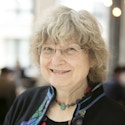Simons Investigators
- Email:
mps@simonsfoundation.org
Simons Investigators are outstanding theoretical scientists who receive a stable base of research support from the foundation, enabling them to undertake the long-term study of fundamental questions.
The Investigator program has been discontinued.
Simons Investigators in Mathematics, Physics, Astrophysics and Computer Science
The intent of the Simons Investigators in Mathematics, Physics, Astrophysics and Computer Science programs is to support outstanding theoretical scientists in their most productive years, when they are establishing creative new research directions, providing leadership to the field and effectively mentoring junior scientists. A Simons Investigator is appointed for an initial period of five years. Renewal for an additional five years is contingent upon the evaluation of scientific impact of the Investigator.
Simons Investigators in Mathematical Modeling of Living Systems (MMLS)
This program aims to help the research careers of outstanding scientists working on mathematical and theoretical approaches to topics in the life sciences. A Simons Investigator in MMLS is appointed for five years.
Math+X Investigators
This program encourages novel collaborations between mathematics and other fields in science or engineering by providing funds to professors to establish programs at the interface between mathematics and other fields of science or engineering. A Math+X Investigator is appointed for an initial period of five years. Renewal for an additional five years is contingent upon the evaluation of scientific impact of the Investigator.
- Email:
mps@simonsfoundation.org
- Email:
mps@simonsfoundation.org
2016
Vladimir Markovic, Ph.D.
University of Oxford
Vladimir Markovic has made fundamental contributions to the theory of three-dimensional manifolds, resolving several long-standing problems, among them the proof of the Thurston conjecture concerning immersed almost-geodesic surfaces in closed hyperbolic three-manifolds.
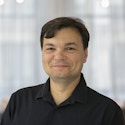
James McKernan, Ph.D.
University of California, San Diego
James McKernan, in collaboration with Caucher Birkar, Paolo Cascini, and Christopher D. Hacon, has established one of the cornerstones of the Minimal Model Program: the finite generation of canonical rings in all dimensions.
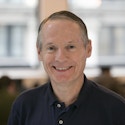
Bjorn Poonen, Ph.D.
Massachusetts Institute of Technology
Bjorn Poonen has contributed decisively to many areas revolving broadly around the study of Diophantine equations. Among his achievements are the construction of examples of threefolds without rational points but vanishing local and global obstructions, new heuristics concerning rational points on elliptic curves and results about rational points on curves of higher genus.

Mina Aganagic, Ph.D.
University of California, Berkeley
Mina Aganagic applies insights from quantum physics to mathematical problems in geometry and topology. She made deep and influential conjectures in enumerative geometry, knot theory and mirror symmetry using predictions from string theory and from M-theory.
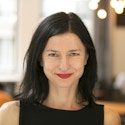
Andrea Alù, Ph.D.
University of Texas at Austin
Andrea Alù’s work on the manipulation of light in artificial materials and metamaterials has shown how clever designs may surpass what had previously been thought to be limitations on wave propagation in materials. He has developed new concepts for cloaking, one-way propagation of waves in materials, dramatic enhancement of nonlinearities in nanostructures and ultrathin optical devices based on metasurfaces and twisted metamaterials.
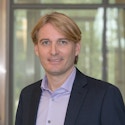
Andrei Beloborodov, Ph.D.
Columbia University
Andrei Beloborodov applies first-principles physics to astrophysical systems, and his work provides crucial new insights on how exotic astronomical objects work. He has done important research on compact objects like neutron stars and black holes and is particularly well-known for his studies of gamma-ray bursts, magnetars and pulsars.
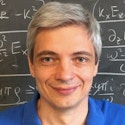
B. Andrei Bernevig, Ph.D.
Princeton University
Andrei Bernevig is a leader in the lively field of topological electronic states in solids. His initial proposal of the quantum spin Hall effect in HgTe quantum wells was soon followed by dramatic experimental confirmation. He has developed a theoretical framework for topological insulators and written a highly regarded book on the subject. His work on topological superconductivity in metal chains on superconducting surfaces, as well as his prediction of two types of Weyl semimetal states in transition metal monophosphides and WTe2, has stimulated considerable theoretical and experimental activity.
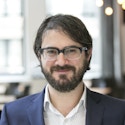
Garnet K.-L. Chan, Ph.D.
California Institute of Technology
Garnet Chan’s research lies at the interface of theoretical chemistry, condensed matter physics and quantum information theory, and is concerned with the phenomena and simulation methods associated with quantum many-particle systems. Some current problems of interest include metalloenzymes and biological catalysts, transition metal oxides and superconductivity, and conjugated organic systems and light harvesting. He has contributed to a wide range of quantum simulation methods, including density matrix renormalization and tensor network algorithms, quantum embedding theories and local correlation approximations.

Daniel Eisenstein, Ph.D.
Harvard University
Daniel Eisenstein is a leading figure in modern cosmology. He is known for utilization of the baryon acoustic oscillations (BAO) standard ruler for measuring the geometry of the universe, which underpins several large upcoming ground and space missions. Eisenstein blends theory, computation and data analysis seamlessly to push the boundaries of current-day research in cosmology.
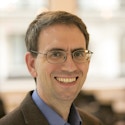
Anton Kapustin, Ph.D.
California Institute of Technology
Anton Kapustin’s work lies at the interface of physics and mathematics. He applied ideas from gauge theory to the study of the geometric Langlands program in mathematics and has applied sophisticated mathematics to the classification of exotic quantum states of matter.
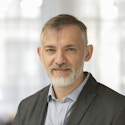
Madhu Sudan, Ph.D.
Harvard University
Madhu Sudan is known for his work in computational complexity theory. He has made fundamental contributions in the areas of probabilistically checkable proofs, nonapproximability of optimization problems and computational aspects of error-correcting codes. More recently, he initiated the study of universal semantic communication.

David Zuckerman, Ph.D.
University of Texas at Austin
David Zuckerman is a leader in pseudorandomness and randomness extraction, an area that his early work pioneered. He has a number of beautiful and important results in construction and application of extractors, including applications to coding theory, computational complexity and cryptography, as well as his recent breakthrough result with two-source extractors.

Surya Ganguli, Ph.D.
Stanford University
Surya Ganguli’s work combines theory with computation, recording, analysis of data, and modeling, contributing to our understanding of how the brain works. He has made fundamental contributions to the mechanisms of short- and long-term memory. His work also addresses difficult problems in machine learning.

Kirill Korolev, Ph.D.
Boston University
Kirill Korolev works at the interface of biophysics, statistical physics, soft condensed-matter physics and ecology. He develops elegant theories and combines them with the results of controlled experiments to address topics ranging from spreading of cell populations on a 2-D substrate, cancer progression, and ecology. His work is unified by the theme of how complex interactions determine the dynamics of biological systems.
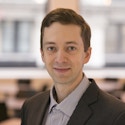
Madhav Mani, Ph.D.
Northwestern University
Following thesis work on fluid mechanics and soft matter physics, Madhav Mani transitioned to studying the mechanics of development and gene regulation in organisms. In collaboration with experimentalists, he combined mathematical modeling with quantitative analysis of growing tissues to shed light on how cells collectively develop preferred orientations. Using model-based forced-inference techniques, he also reconstructed the dynamics of networks that drive cellular flows during early embryonic development.

Lisa Manning, Ph.D.
Syracuse University
Lisa Manning started her research career in the physics of glasses, i.e., how a disordered group of molecules or particles freezes into a rigid solid at a well-defined temperature. She then turned her attention to morphogenesis, the process by which embryos transform from a spherical egg to a shape we recognize as an insect, plant or mammal, showing that aspects of this process could be modeled by surface tension in analogy with the description of immiscible liquids. Her most recent work uses ideas from the physics of glasses to describe the mobility of cells organized in sheets and applies to a broad class of biological tissues, including embryos and cells from asthma patients.
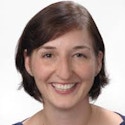
Ingrid Daubechies, Ph.D.
Duke University
Ingrid Daubechies constructed the first example of what mathematicians call “wavelets,” which have had an immense impact on pure and applied mathematics. She has made and continues to make creative applications of wavelets to a large variety of problems in engineering and other fields.
